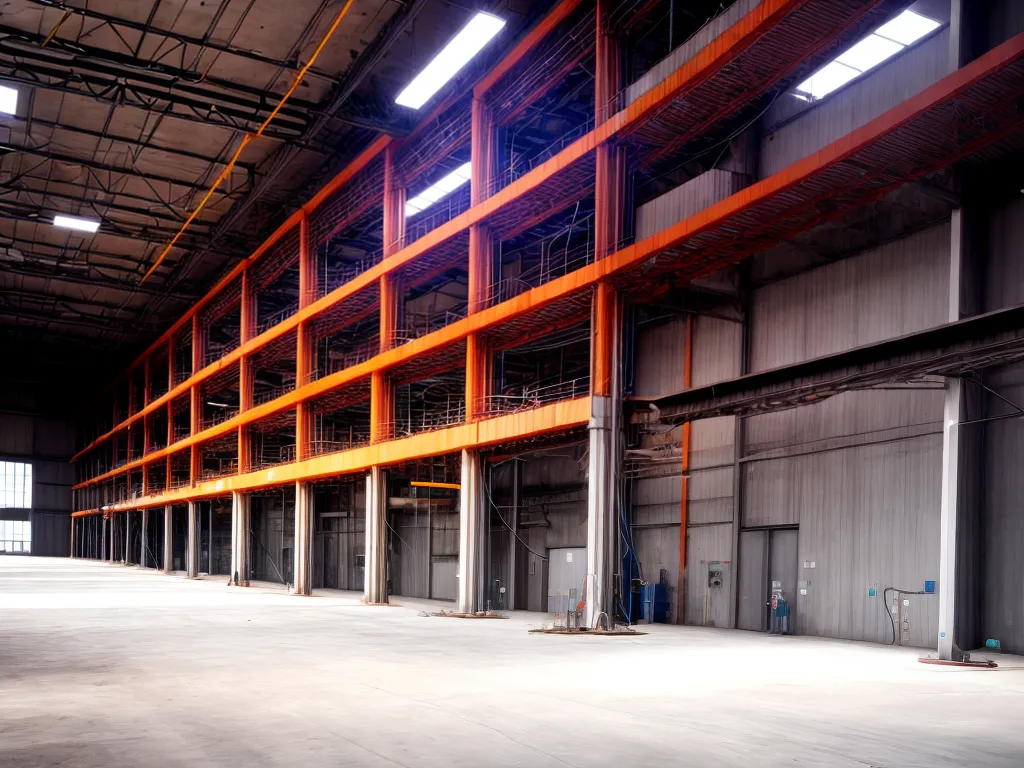
Introduction
Nonmetallic-sheathed cable, commonly known as Romex, has been widely used in residential and commercial buildings for decades. However, its use in industrial facilities poses some unique safety considerations that facility managers should carefully evaluate. In this article, I will provide an in-depth look at the risks of using nonmetallic cable in legacy industrial buildings and how to assess if replacement or remediation is warranted.
What is Nonmetallic-Sheathed Cable?
Nonmetallic-sheathed cable, also referred to as Romex, consists of two or more insulated conductors wrapped in a nonmetallic sheath. The most common type is NM-B cable which contains insulated hot and neutral conductors and an uninsulated ground wire. The nonmetallic sheathing is often made of PVC or other thermoplastic material.
Compared to metal-clad cables, nonmetallic cables are lighter weight, more flexible, and lower cost. They also do not require specialized tools to install. This makes them well suited for residential and commercial wiring projects.
Why Was Nonmetallic Cable Used in Industrial Facilities?
In the past, nonmetallic cable gained popularity in industrial facilities for the following reasons:
-
Lower Upfront Cost - The cable is less expensive than metal-clad alternatives. This made it attractive for cost-conscious project budgets.
-
Ease of Installation - Nonmetallic cable is lightweight and flexible. This made installation faster compared to stiff metal conduits.
-
Perceived Suitability - Lack of standards and codes governing industrial wiring methods meant that Romex was seen as an acceptable option.
-
Grandfathering Into Existing Buildings - Once installed, old nonmetallic cabling was allowed to remain when buildings were expanded or renovated.
Risks of Using Nonmetallic Cable in Industrial Environments
While suitable for residential and commercial settings, Romex can pose safety hazards when used in the harsher industrial environment:
Physical Damage
-
The nonmetallic sheathing provides less protection than metal coatings. Cable damage can occur from:
-
Impact - Cables run through floor trenches or overhead can be hit by vehicles such as forklifts.
-
Crushing - Cables buried underground or run through conduit may be crushed by shifting equipment.
-
Vibration - The movement of heavy machinery can damage cabling over time.
-
-
Damaged cables are more prone to shorts and ground faults.
Environmental Exposure
-
Nonmetallic jackets provide less environmental protection than metal conduits:
-
Liquid infiltration - Oil, coolant or water can seep into damaged cables.
-
Chemical corrosion - Acids, solvents or cleaning agents can degrade the sheathing.
-
UV damage - Sunlight exposure can accelerate wear and deterioration.
-
-
Degraded insulation increases the chances of current leakage or electrical arcing.
Overcurrent & Overload Conditions
-
Romex has reduced current carrying capacity compared to thicker metal-clad cables.
-
Adding new loads to existing circuits can overload undersized nonmetallic cables:
-
Excess current - Sustained overcurrents create thermal stress.
-
Short circuits - High fault current rapidly heats conductors.
-
Arc flash - Damaged cables increase arc flash risk during short circuit.
-
-
These conditions increase fire initiation hazards.
Ground Faults
-
Nonmetallic sheathing offers no path to ground faults.
-
Ground faults on Romex cables can persist for long periods before detection.
-
Prolonged ground faults generate heat that may ignite surrounding materials.
Options for Remediation
Recognizing the risks posed by legacy nonmetallic cabling, facility managers have several options to improve safety:
Full Replacement
-
Removing old Romex and replacing with new metal-clad cables is the most thorough option.
-
Often done progressively when sections of plant are renovated.
-
Highest upfront cost but provides maximum safety.
Selective Replacement
-
Strategically replace highest risk or degraded sections of nonmetallic cabling.
-
Prioritize cables in hazardous areas, high-traffic zones or with known damage.
-
Moderate cost but mitigates biggest safety risks.
Improved Protection
-
Enclose cables in new conduit or raceways.
-
Route exposed cables into overhead trays away from traffic.
-
Lower cost but does not eliminate all risks.
Enhanced Monitoring
-
Deploy arc flash detection to identify faults faster.
-
Perform thermographic inspections to identify hot spots.
-
Provides warning but does not prevent hazards.
Ongoing Risk Assessment
-
Regularly inspect and test nonmetallic cabling.
-
Assess sheathing integrity, tension, connections etc.
-
Use findings to prioritize sections for future replacement.
-
Low cost way to gauge risks and plan upgrades.
Conclusion
While nonmetallic-sheathed cable was used extensively in the past, its safety risks are now well recognized. Assessing the current condition of Romex cables and gradually replacing damaged or high-risk sections can help mitigate hazards in older industrial facilities. A combination of replacement, improved protection, monitoring, and assessment is the most strategic approach.